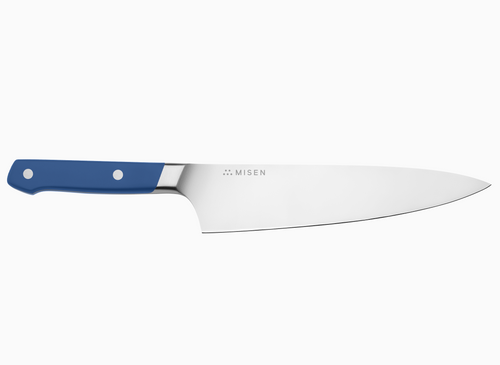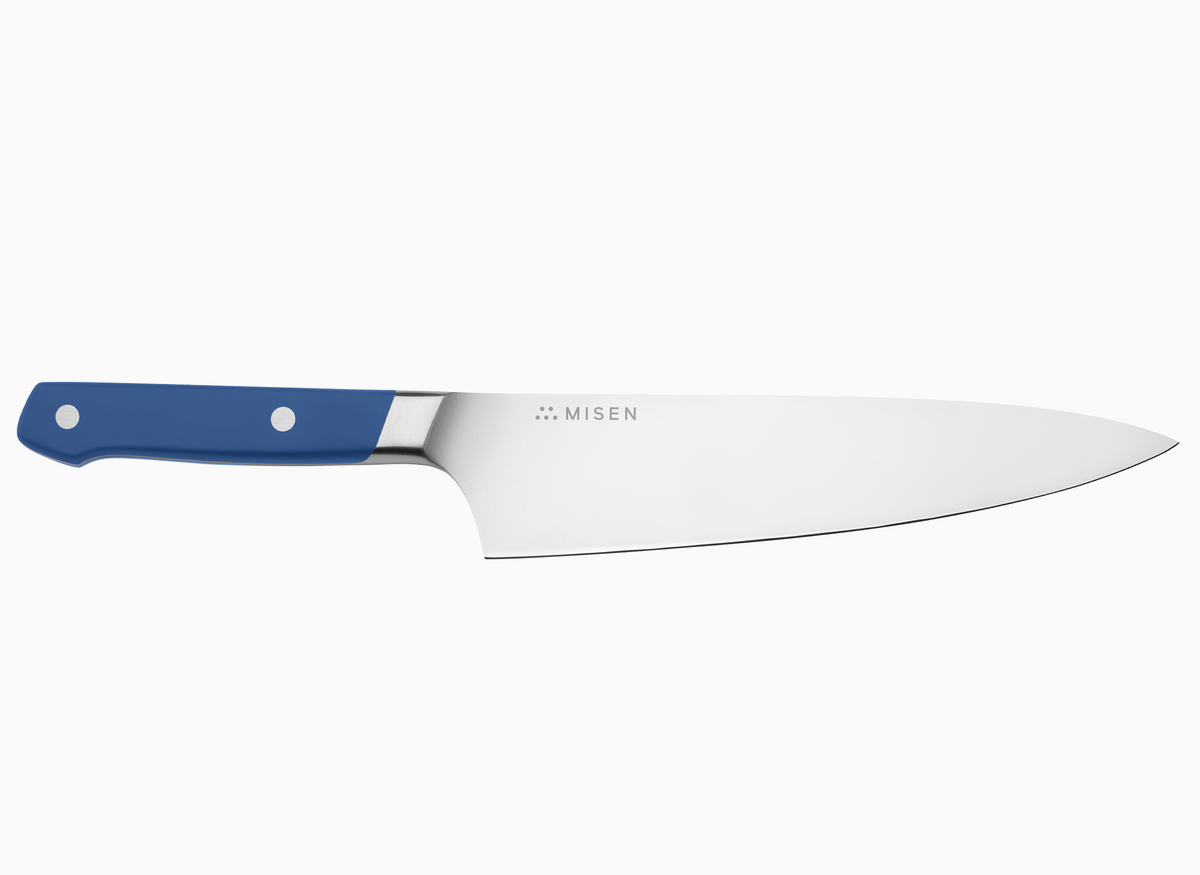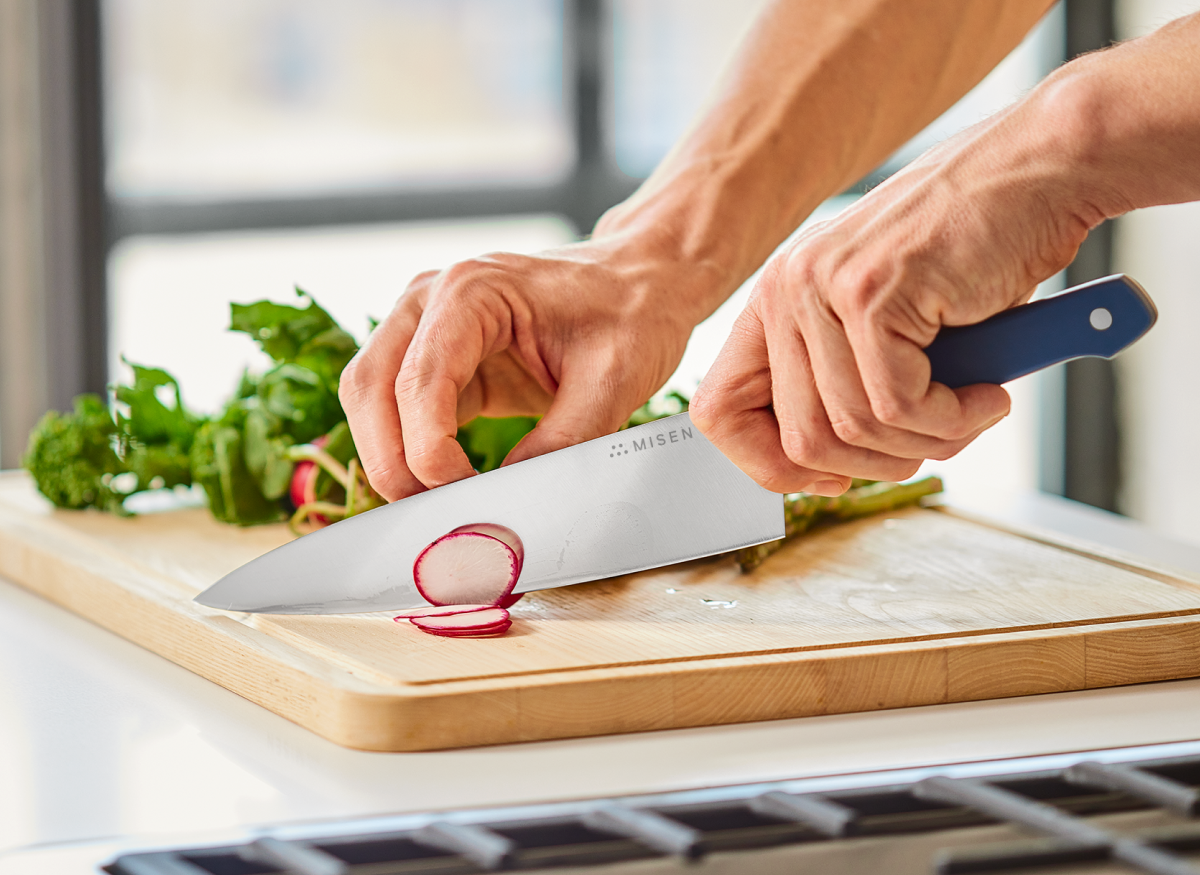Non-Toxic Non-Stick Pans: A Buyer's Guide

This guide explores the world of non-toxic, non-stick cookware, focusing on safe materials, key features to consider, and top options available. We'll dive into the benefits of choosing non-toxic cookware, different types of non-stick coatings, and essential factors like heat conductivity and durability. By the end, you'll be equipped with the knowledge to make an informed decision on the best non-toxic, non-stick pan for your kitchen.
Understanding Non-Toxic Cookware
Defining non-toxic materials in cookware
When it comes to non-toxic cookware, we're looking at materials that don't leach harmful chemicals or metals into your food during cooking. Stainless steel is a popular choice, known for its durability and non-reactive properties[1]. Cast iron, when properly seasoned, provides a naturally non-stick surface without the need for chemical coatings[2].
Ceramic cookware, either pure ceramic or ceramic-coated, offers another non-toxic alternative to traditional non-stick pans[3]. Glass cookware is also a safe option, as it doesn't react with food or release any harmful substances. Carbon steel, similar to cast iron but lighter, is considered non-toxic when seasoned correctly. Our carbon steel wok, for example, combines the benefits of a non-toxic material with excellent heat distribution for perfect stir-fries.
These materials are free from per- and polyfluoroalkyl substances (PFAS), including PFOA and PTFE, which have been associated with potential health risks[2].
Common harmful chemicals to avoid
When shopping for non-toxic cookware, it's crucial to be aware of potentially harmful chemicals commonly found in traditional non-stick pans. Polytetrafluoroethylene (PTFE), better known as Teflon, has been a subject of concern due to its potential to release toxic fumes when overheated[4].
While modern Teflon cookware is considered safe for everyday use at temperatures below 500°F (260°C), the breakdown of PTFE coatings at higher temperatures remains a risk. Another chemical to avoid is perfluorooctanoic acid (PFOA), which was previously used in the production of Teflon until 2013.
Although PFOA has been phased out, it's important to note that other per- and polyfluoroalkyl substances (PFAS) may still be present in some cookware[5]. These compounds have been linked to various health issues, including thyroid disorders, chronic kidney disease, and certain cancers. Emerging alternatives to PFOA, such as GenX, are also under scrutiny for potential toxicity[6].
To minimize exposure to these chemicals, opt for cookware made from materials like stainless steel, cast iron, or ceramic, which don't require potentially harmful non-stick coatings.
Benefits of choosing non-toxic options
Choosing non-toxic cookware offers numerous benefits for both health and environmental reasons. By opting for materials like stainless steel, cast iron, or ceramic, you can significantly reduce your exposure to potentially harmful chemicals such as PFAS, PFOA, and PTFE[7].
These safer alternatives not only minimize health risks but also tend to be more durable and long-lasting, providing better value over time. Non-toxic cookware often boasts superior heat distribution and retention properties, enhancing cooking performance and energy efficiency[8].
Additionally, many non-toxic options, like cast iron and stainless steel, can safely transition from stovetop to oven, offering versatility in cooking methods. The peace of mind that comes with using non-toxic cookware is invaluable, knowing that meals are prepared without the risk of chemical leaching, even at high temperatures.
Furthermore, choosing non-toxic cookware aligns with eco-friendly practices, as these materials are often recyclable and have a lower environmental impact compared to their non-stick counterparts[5]. While there may be a learning curve in terms of care and maintenance for some non-toxic options, the long-term benefits to personal health and the environment far outweigh any initial challenges.
Types of Non-Toxic Non-Stick Coatings
Ceramic-coated cookware
Ceramic-coated cookware has gained popularity as a non-toxic alternative to traditional non-stick pans. These pots and pans feature a ceramic coating applied to an aluminum or stainless steel base, creating a slick surface without the use of PFOS, PFOA, or PTFE[9].
Ceramic cookware offers several advantages, including the ability to withstand higher temperatures than conventional non-stick pans. This heat resistance makes ceramic-coated pans suitable for oven use and allows for better searing of meats. Additionally, ceramic coatings are generally considered more environmentally friendly and safer for cooking.
However, it's important to note that ceramic-coated cookware may lose its non-stick properties more quickly than traditional non-stick surfaces, requiring careful maintenance and the use of non-metal utensils to preserve its longevity[7]. To maximize the lifespan of ceramic-coated cookware, it's recommended to follow manufacturer guidelines for care and use, including avoiding sudden temperature changes and hand-washing to maintain the integrity of the coating.
Enamel-coated cast iron
Enamel-coated cast iron cookware offers a unique blend of traditional cast iron benefits with modern convenience. These pans feature a porcelain enamel coating that protects the cast iron, making it rust-resistant and nonreactive to acidic foods.
While enamel-coated cast iron is not inherently nonstick, it provides excellent heat distribution and retention, making it ideal for stovetop-to-oven cooking. The cooking surface of enamel-coated skillets often has a darker, slightly textured enamel that aids in browning food and releasing it more easily. However, it's crucial to preheat the pan properly and use adequate oil or butter to prevent sticking.
Unlike traditional cast iron, enamel-coated versions don't require seasoning, simplifying maintenance. They are incredibly versatile, suitable for various cooking methods, but have temperature limitations compared to bare cast iron. While enamel-coated cast iron pans are generally more expensive than their uncoated counterparts, they offer the advantage of being easier to clean and maintain.
Seasoned carbon steel
Seasoned carbon steel pans offer a unique blend of durability, versatility, and natural non-stick properties, making them a favorite among professional chefs and discerning home cooks. Composed of 99% iron and 1% carbon, these pans provide excellent heat distribution and responsiveness, similar to stainless steel, while retaining heat like cast iron[10].
The seasoning process, which involves burning oil into the pan's surface, creates a protective layer that not only prevents rust but also develops a natural non-stick coating over time[11]. This seasoned surface excels at high-heat cooking methods like searing, stir-frying, and sautéing, while also being lighter and more maneuverable than traditional cast iron[12].
However, it's important to note that carbon steel pans require proper maintenance, including regular seasoning and avoiding acidic foods, to preserve their non-stick properties and prevent rusting. With proper care, these pans can last a lifetime, improving with use and developing a unique patina that enhances their cooking performance.
Key Features to Consider
Heat conductivity and distribution
Heat conductivity and distribution are crucial factors to consider when selecting non-toxic cookware. Stainless steel cookware offers excellent heat distribution due to its tri-ply construction with an aluminum core[7]. Cast iron provides superior heat retention and even cooking, making it ideal for searing and baking[7].
For those seeking the responsiveness of professional-grade cookware, carbon steel pans offer quick temperature changes and develop a natural non-stick surface over time[7]. Ceramic-coated aluminum cookware provides a non-toxic alternative with good heat conductivity, though it may not be as durable as other options[1].
When considering heat distribution, it's important to note that materials like pure ceramic may conduct heat poorly compared to metals, which could affect cooking performance[3].
Durability and longevity
When evaluating non-toxic non-stick cookware, durability and longevity are crucial factors to consider. Traditional non-stick pans with PTFE coatings typically last between one to five years, even with proper care[13]. This short lifespan is due to the susceptibility of the coating to scratches and damage from metal utensils, high heat, and abrasive cleaning methods.
In contrast, alternative materials like cast iron, stainless steel, and pure ceramic offer significantly greater longevity. These materials can last for generations when properly maintained, making them more cost-effective and environmentally friendly in the long run[14].
Cast iron and carbon steel pans develop a natural non-stick surface through seasoning, which improves with use over time. Pure ceramic cookware, while not inherently non-stick, is highly durable and resistant to scratches and chips. It can withstand high temperatures without degrading, unlike PTFE-coated pans which begin to break down at 500°F (260°C)[4].
The durability of these alternative materials not only ensures a longer lifespan but also reduces the risk of harmful chemicals leaching into food over time, making them a safer choice for long-term use in the kitchen.
Ease of cleaning and maintenance
Proper cleaning and maintenance are crucial for preserving the non-stick properties and longevity of non-toxic cookware. For most non-stick pans, handwashing with mild dish soap and a soft cloth or sponge is recommended, as dishwashers can degrade the non-stick surface[15].
To remove stubborn residue, soaking the pan in warm, soapy water before gently scrubbing can be effective. For burnt-on food, a paste of baking soda and water applied with a non-abrasive sponge can help restore the surface without damaging the coating.
It's essential to avoid abrasive tools like steel wool or stiff brushes, which can scratch and deteriorate the non-stick layer[16]. When cooking, using low to medium heat and avoiding empty pan preheating can prevent warping and extend the life of the cookware.
Seasoning new non-stick pans with a light coating of high-smoke-point oil can enhance their performance and durability. Additionally, using wooden or silicone utensils instead of metal ones helps prevent scratching. Proper storage is also key; placing pan protectors or soft cloths between stacked pans can prevent surface damage.
By following these care instructions, non-toxic non-stick cookware can maintain its effectiveness and safety for years, providing a reliable and healthy cooking experience.
Top Non-Toxic Non-Stick Pan Options
Ceramic-coated options
Ceramic-coated cookware has emerged as a popular non-toxic alternative to traditional non-stick pans. These pans offer excellent non-stick properties, with testers reporting that omelets slide right off the pan without sticking. Many ceramic-coated options are induction-compatible and oven-safe up to 550°F, providing versatility for various cooking methods[1].
For those seeking a single, versatile piece, some brands offer pans that combine the functions of multiple kitchen tools in one space-saving design. Their ceramic coatings are free of harmful chemicals and perform reliably, though they may not be as slick as traditional non-stick surfaces. Clever designs may include features like steamer inserts and wooden spatulas that nest into the handle, making them ideal for small kitchens or minimalist cooks[17].
Budget-conscious consumers might consider more affordable ceramic-coated options, which offer good performance without compromising on safety. Their lightweight design and soft-grip handles make them user-friendly, especially for beginners. While they may not have the longevity of more expensive options, they provide an excellent entry point for those new to ceramic-coated cookware[18].
Stainless steel alternatives
Stainless steel cookware offers a durable and versatile alternative to non-stick pans. High-quality stainless steel sets often feature tri-ply construction, with an aluminum core sandwiched between layers of stainless steel. This design ensures excellent heat distribution and retention, making it suitable for various cooking techniques.
Many stainless steel sets are oven-safe up to 600°F and compatible with all stovetops, including induction. While stainless steel requires more care to prevent sticking, it excels at high-heat cooking and developing flavorful fond.
For those seeking a budget-friendly option, there are 5-ply stainless steel clad pans that offer superior quality at a more accessible price point. These pans often feature rolled rims for easy pouring and are oven-safe up to 800°F.
Premium stainless steel cookware lines may showcase advanced technologies that purify the steel surface for easier cleaning and long-lasting shine. Multi-ply construction ensures exceptional heat distribution, while the absence of rivets enhances hygiene and ease of cleaning.
Cast iron and carbon steel choices
Cast iron skillets are renowned for their durability and heat retention, making them excellent choices for non-toxic cooking. They offer superior heat distribution and even cooking, often at an affordable price point[19].
For those seeking a lighter alternative, some brands offer cast iron skillets that weigh just over four pounds, making them exceptionally maneuverable while still providing the benefits of cast iron cooking[19].
Carbon steel pans offer a compelling middle ground between cast iron and stainless steel, combining excellent heat conductivity with natural non-stick properties. They excel in even heating and develop a durable non-stick patina over time, making them a favorite among professional chefs[19].
For budget-conscious cooks, there are professional-grade carbon steel pans that provide excellent performance at a more accessible price point, featuring quick heating and a lightweight design ideal for high-heat cooking techniques[19].
Some carbon steel options come pre-seasoned and ready for immediate use with impressive non-stick properties right out of the box[20].
Conclusion
Choosing the right non-toxic, non-stick pan can significantly enhance your cooking experience while prioritizing your health and the environment. By considering factors like material, heat conductivity, durability, and maintenance requirements, you can find the perfect cookware to suit your needs. Whether you opt for ceramic-coated, stainless steel, or carbon steel pans, investing in high-quality, non-toxic cookware is a decision that will benefit you for years to come. Ready to upgrade your kitchen with safe, durable, and effective cookware? Shop Now to explore our range of non-toxic cooking solutions.
- Non-toxic cookware materials like stainless steel, cast iron, and ceramic offer safer alternatives to traditional non-stick pans.
- When choosing non-toxic cookware, consider factors such as heat conductivity, durability, and ease of maintenance.
- Ceramic-coated, stainless steel, and seasoned carbon steel pans are popular non-toxic options with varying benefits and care requirements.
- Proper cleaning and maintenance are crucial for preserving the non-stick properties and longevity of non-toxic cookware.
- Investing in high-quality, non-toxic cookware can provide long-term benefits for both health and cooking performance.
- Food & Wine. (n.d.). The Best Non-Toxic Cookware for Your Kitchen.
- Organic Authority. (n.d.). Non-Toxic Cookware Brands to Keep Chemicals Out of Your Food.
- Leaf Score. (n.d.). Best Eco-Friendly Cookware Choices.
- Healthline. (n.d.). Is Nonstick Cookware Like Teflon Safe to Use?
- Consumer Reports. (n.d.). You Can't Always Trust Claims on 'Non-Toxic' Cookware.
- PubMed. (2017). Toxicity of GenX and Other Per- and Polyfluoroalkyl Substances (PFAS).
- Serious Eats. (n.d.). The Best Non-Toxic Cookware.
- Weight & Wellness. (n.d.). Choosing Non-Toxic Cookware.
- The Spruce Eats. (n.d.). Ceramic vs. Nonstick Cookware: What's the Difference?
- De Buyer USA. (n.d.). What is Carbon Steel Cookware? A Guide for Discerning Cooks.
- How to Make Dinner. (n.d.). Cooking with Carbon Steel Pans.
- Gastro Tools. (n.d.). Carbon Steel Guide: Questions and Answers (FAQ).
- Xtrema. (n.d.). Everything You Need to Know About Nonstick Cookware.
- SF Environment. (n.d.). Should I Be Concerned About Using Non-Stick Cookware?
- Better Homes & Gardens. (n.d.). Tips for Using Nonstick Pans.
- Food52. (n.d.). How to Care for Nonstick Pans.
- Food Network. (n.d.). Best Nontoxic Cookware.
- Taste of Home. (n.d.). Best Ceramic Cookware.
- Serious Eats. (n.d.). The Best Skillets.
- Epicurious. (n.d.). The Best Carbon Steel Skillets.








